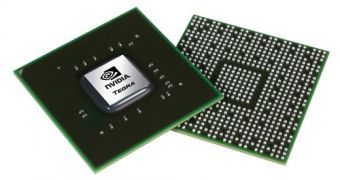Leaks and reports have been buzzing with what NVIDIA may or may not be planning to do on the tablet and smartphone market, but the company itself has now spoken up on the matter, exhibiting something akin to eagerness even.
Though its existence on the mainstream and low-end graphics segments is being threatened by CPUs with integrated graphics, NVIDIA has a backup plan in the form of ARM platforms.
The tablet market really acted as a launch ramp for the Tegra SoC (system-on-chip), to the point where Tegra 2 are found in half of all slates running Android, as well as 70% of all Android-based handsets.
Officially, NVIDIA spent more time, recently, speaking about its finances, saying that it intends to raise $4.7 to $5 billion revenue during Fiscal year 2013.
The long-term goal is more telling, however, as the mobile chip unit is said to be on track for reaching $20 billion all on its own by 2015.
Granted, the Santa Clara, California-based outfit did say that external factors may influence the outcome, but the goal alone is enough to relay the optimism.
The fact that NVIDIA recently bought Icera, and, thus, has all it needs to make wireless-enabled processors, no doubt helped with the mood lifting.
Nonetheless, NVIDIA is, at the moment, focused on closer waters, such as those of tablets with quad-core ARM processors.
The first of them should appear by the end of the ongoing quarter (Q3, 2011), or, at the latest, during the fourth.
"We'll be quite a force to contend with," said NVIDIA Chief Executive Jen-Hsun Huang. "If you don't have a mobile strategy, you're in deep turd. If you're not in mobile processors now, you're seven years too late."
Huang made a point of mentioning that Windows 8 will support apps designed for Windows 7, perhaps suggesting that Microsoft Silverlight will be a big player in cloud-based development.

 14 DAY TRIAL //
14 DAY TRIAL //